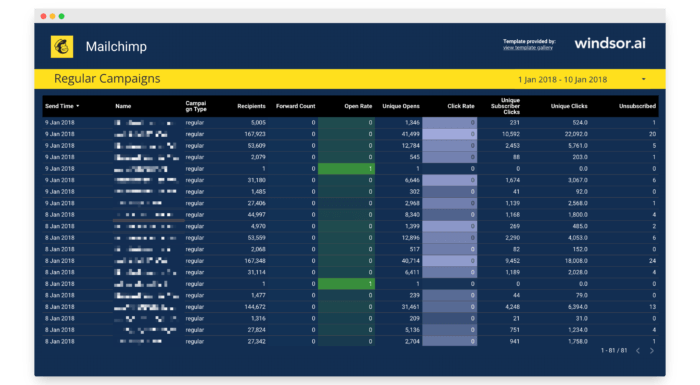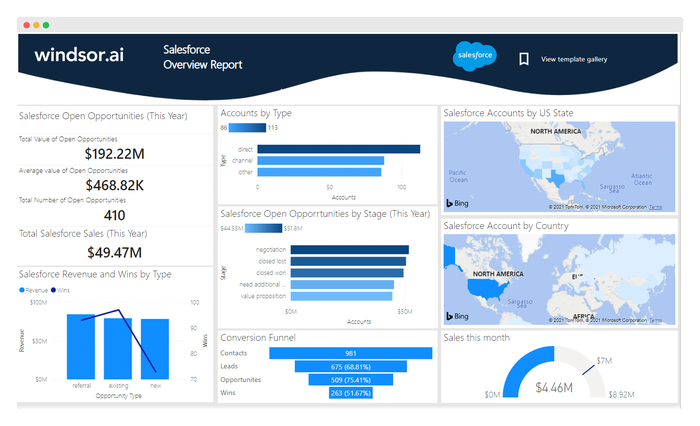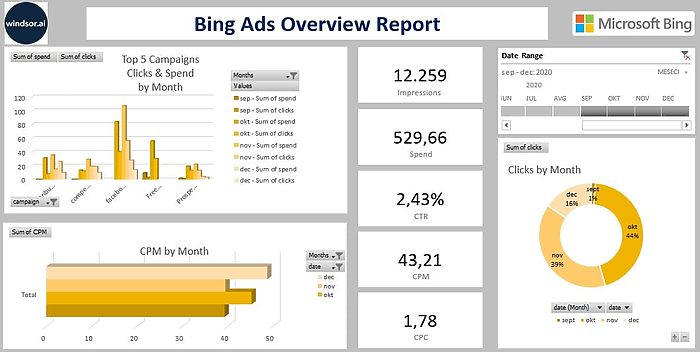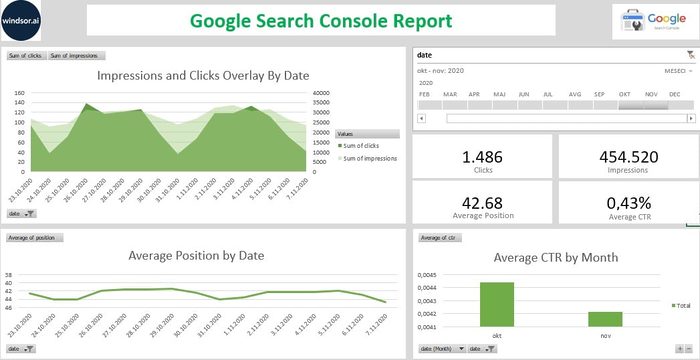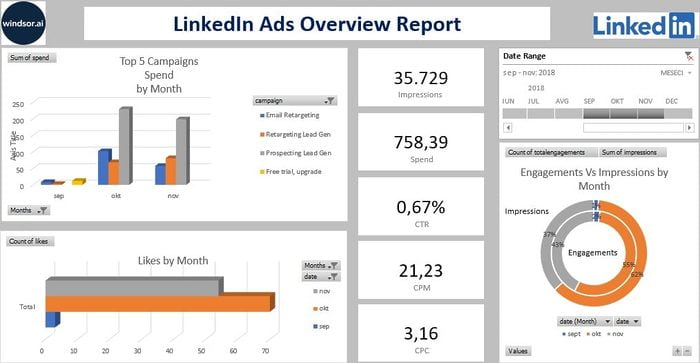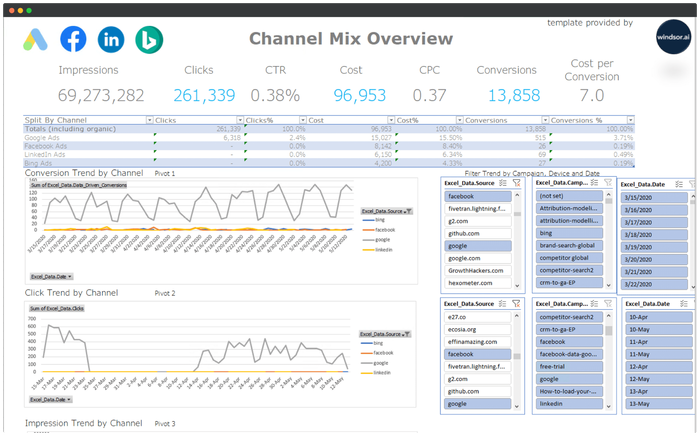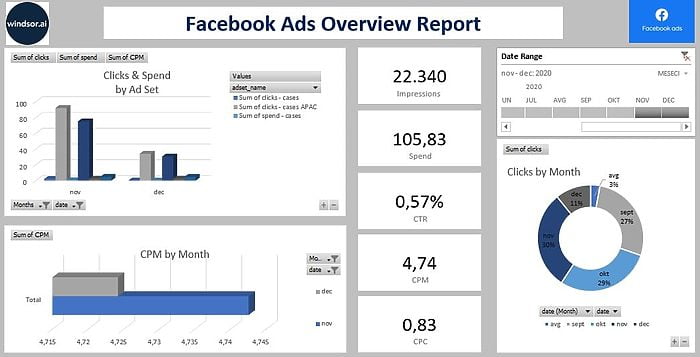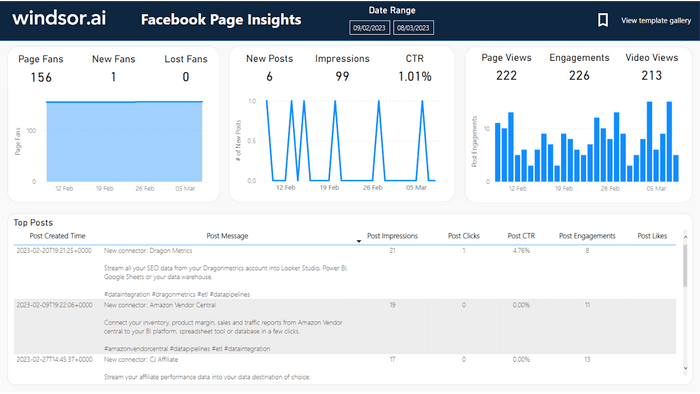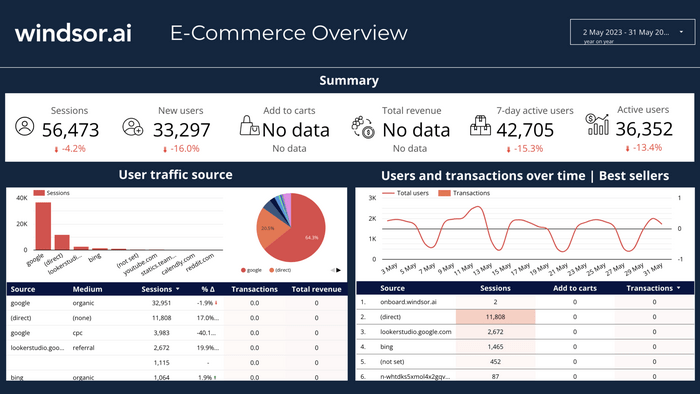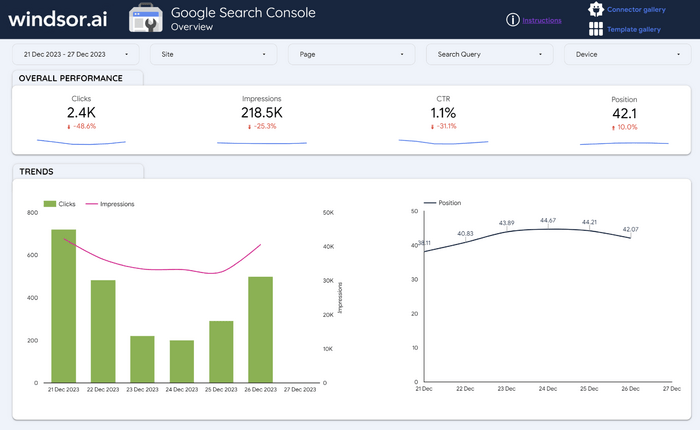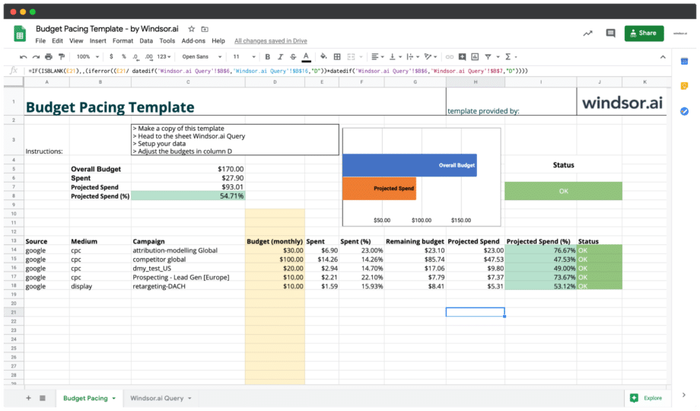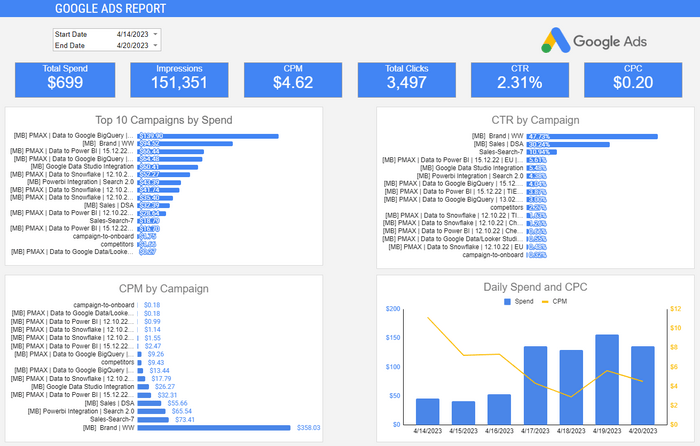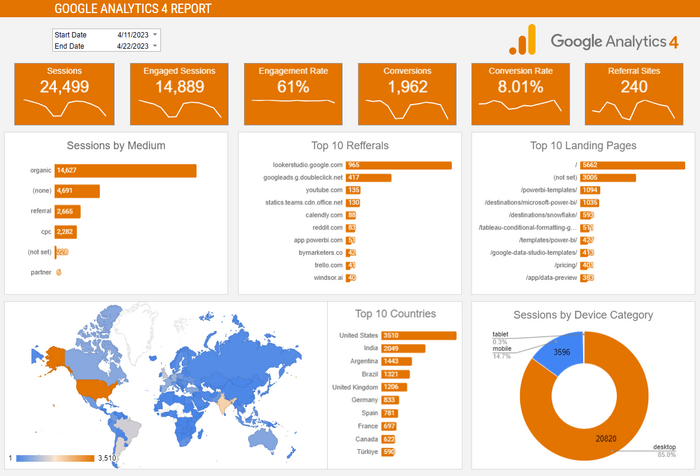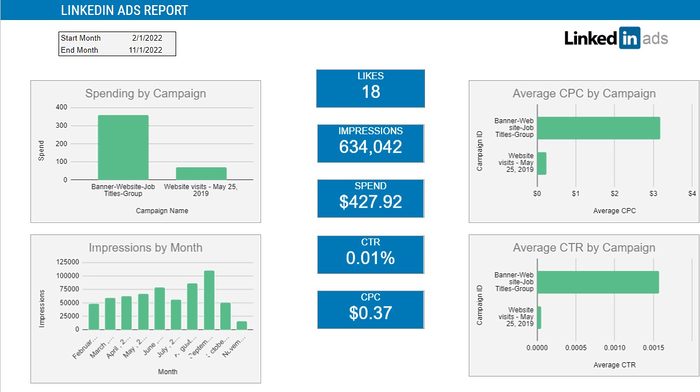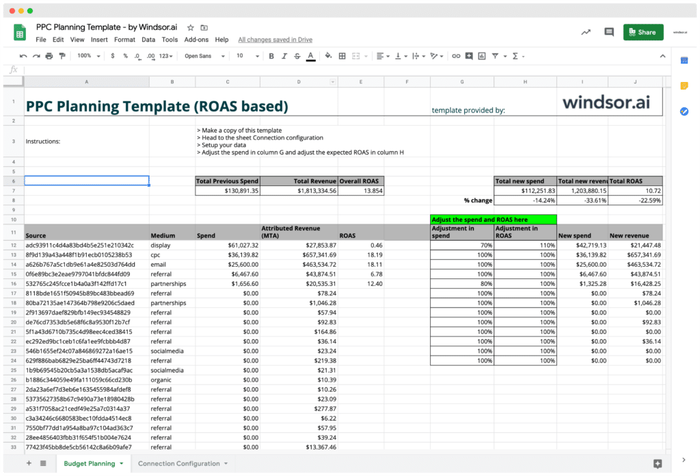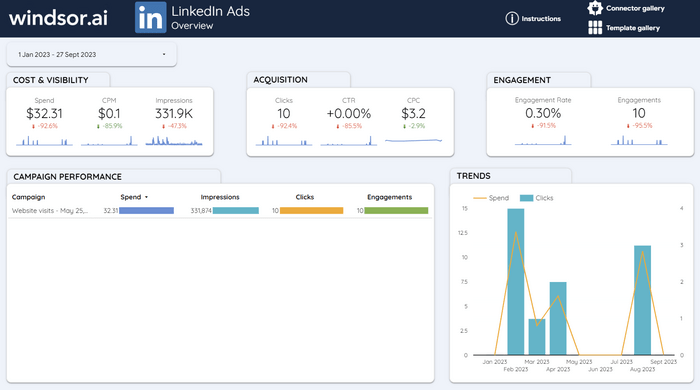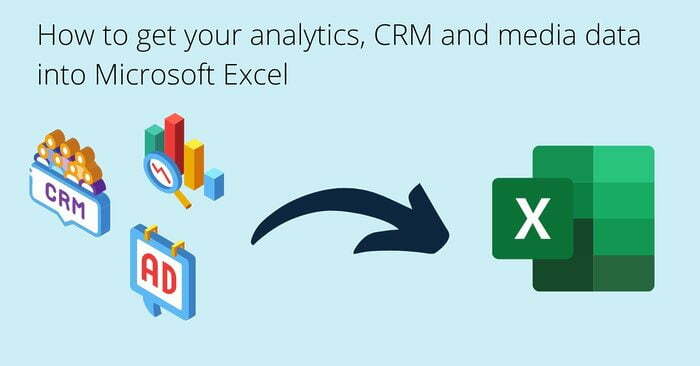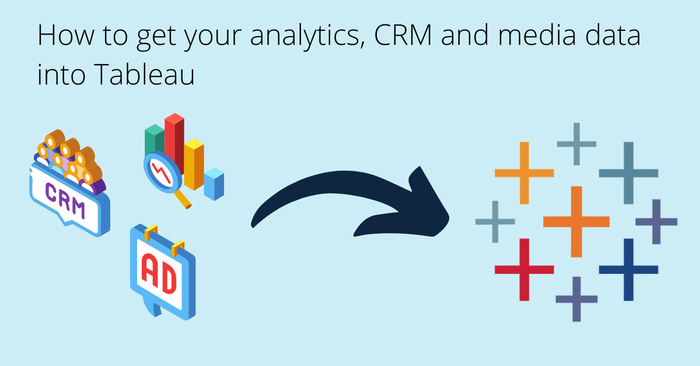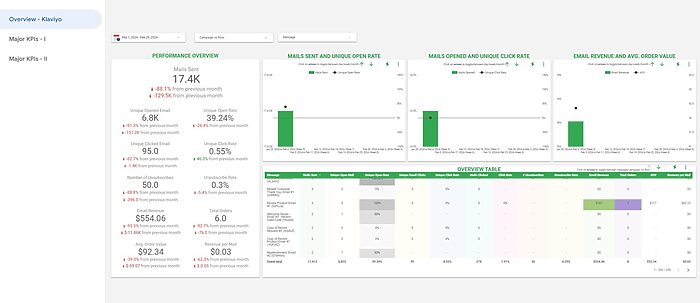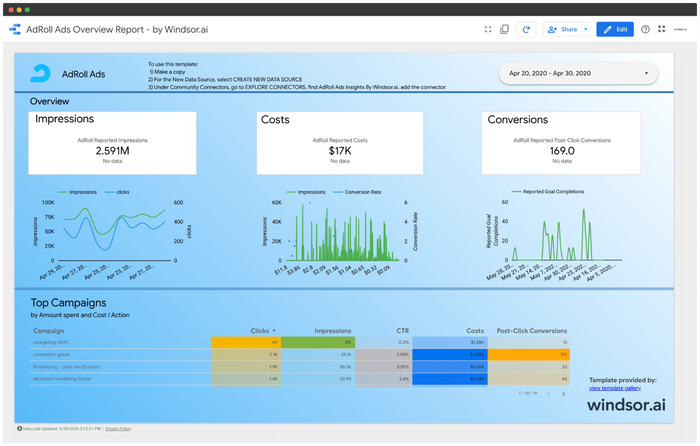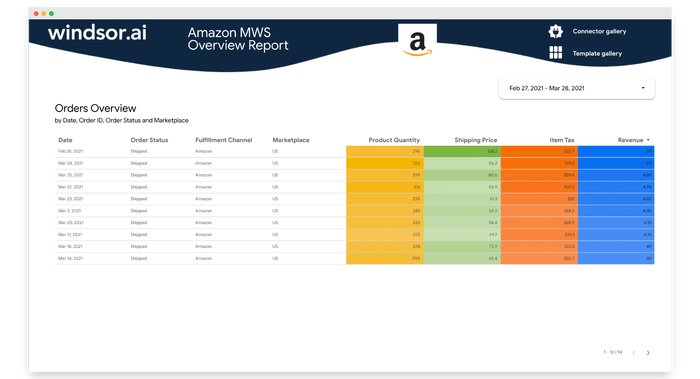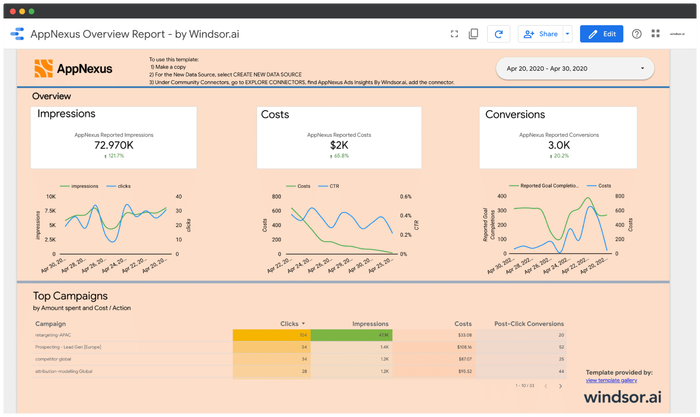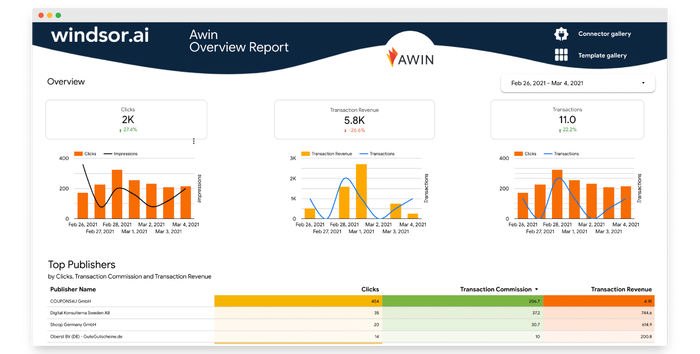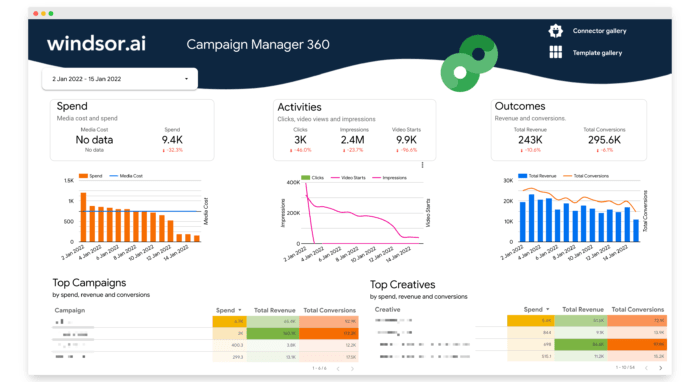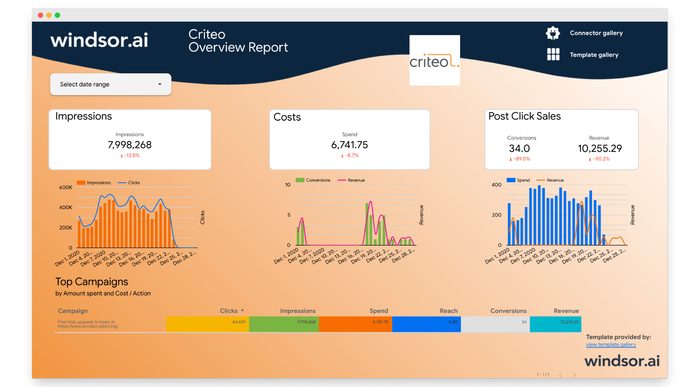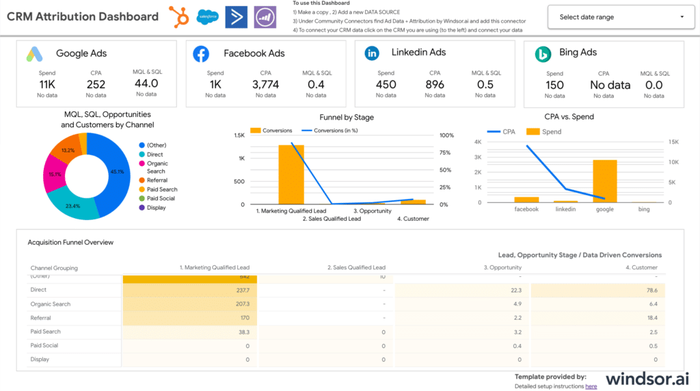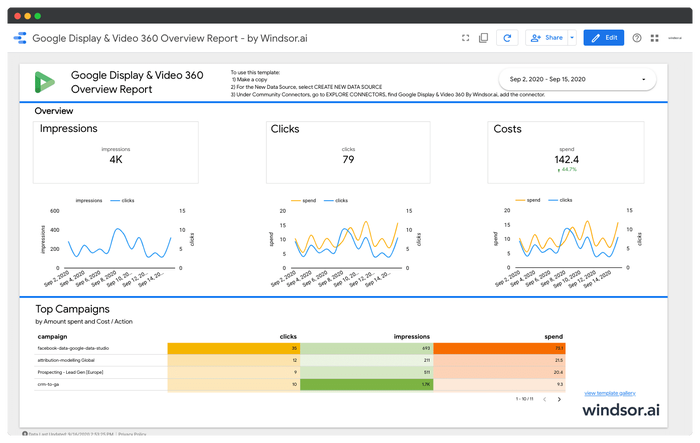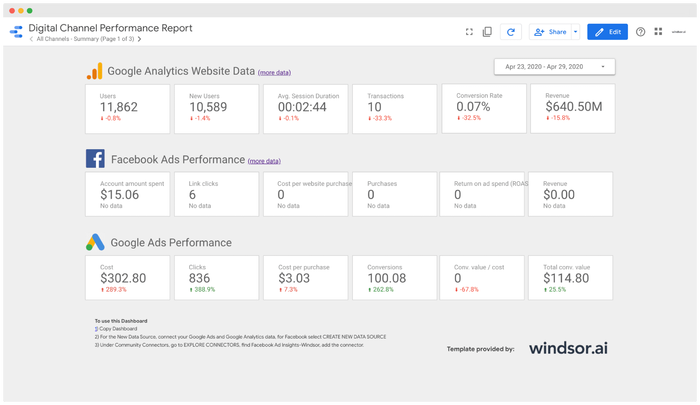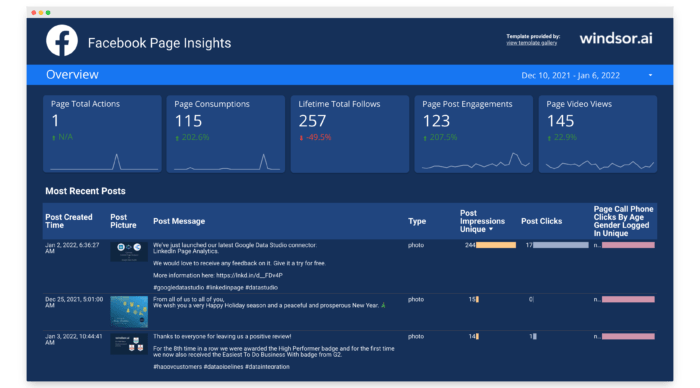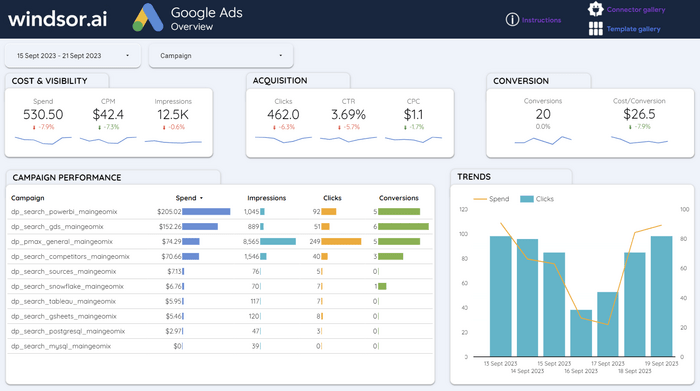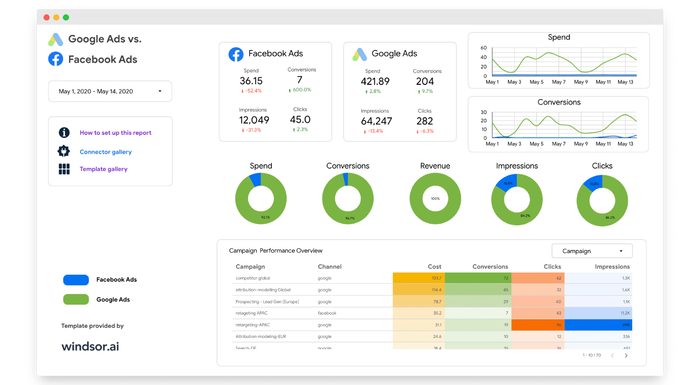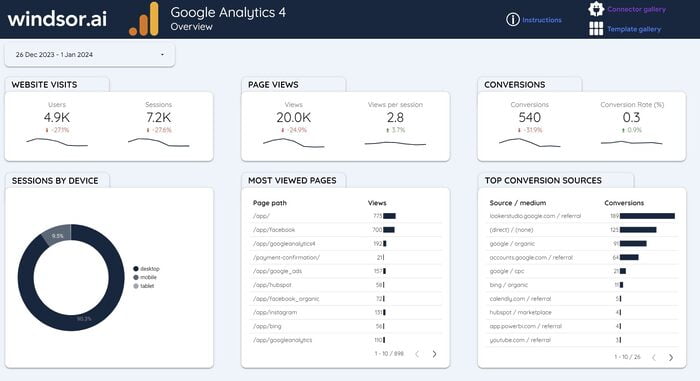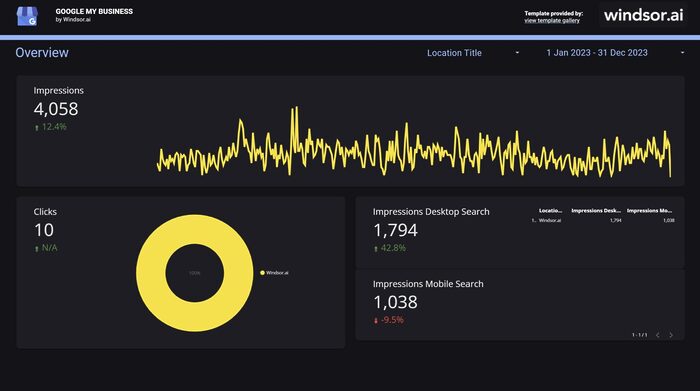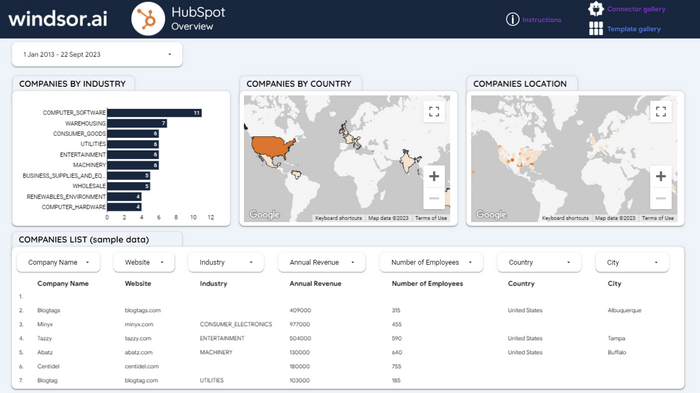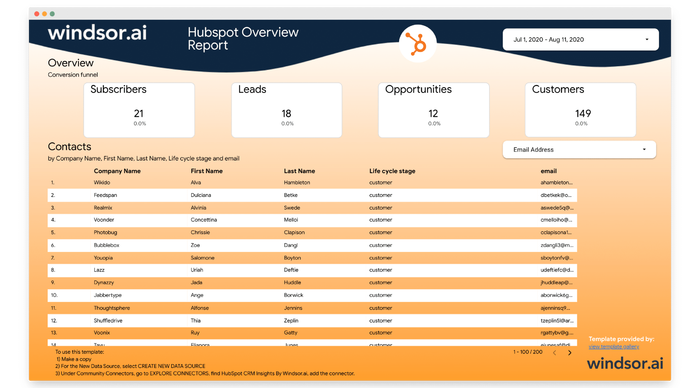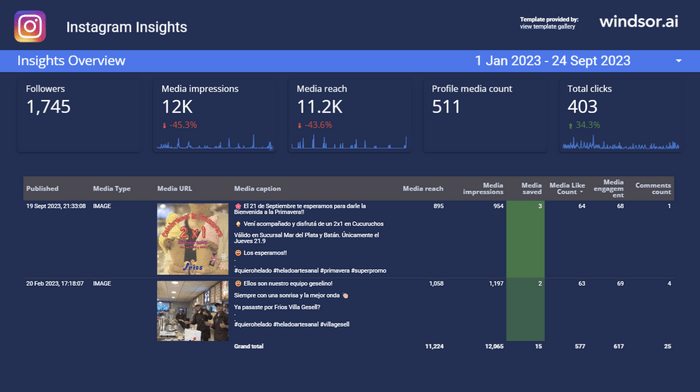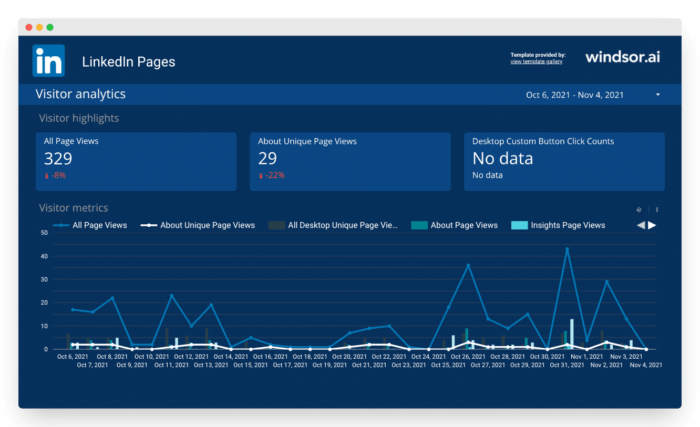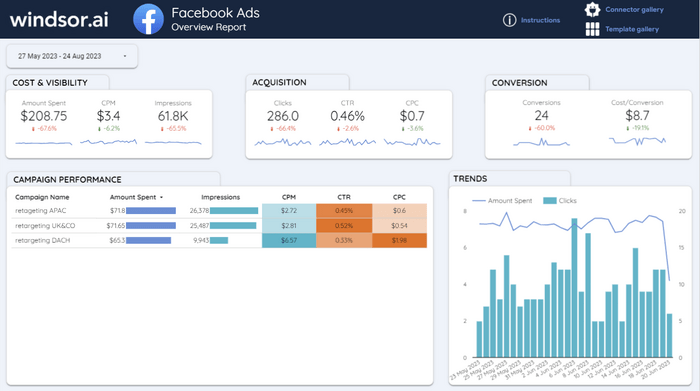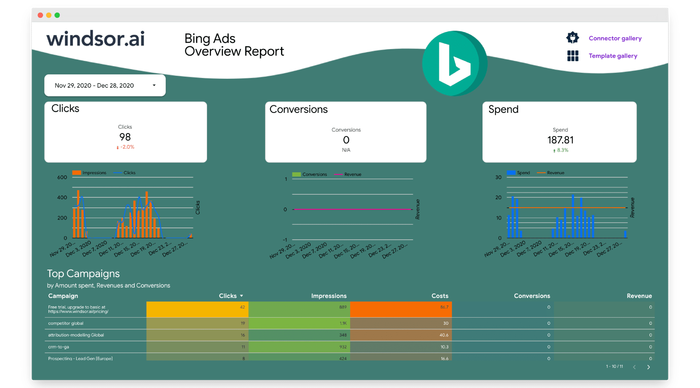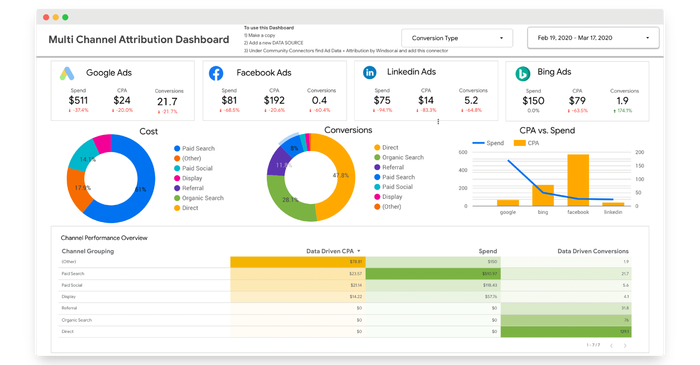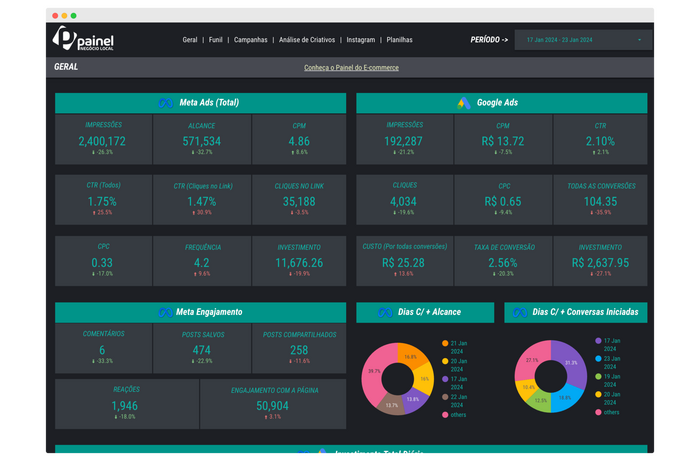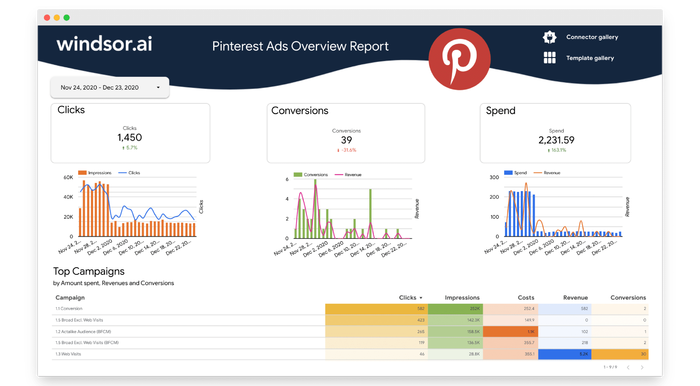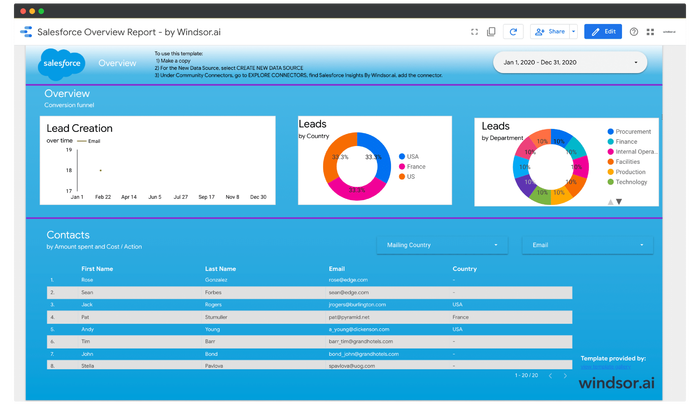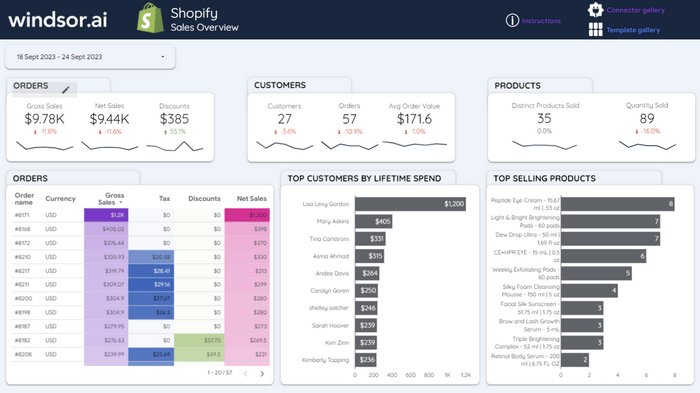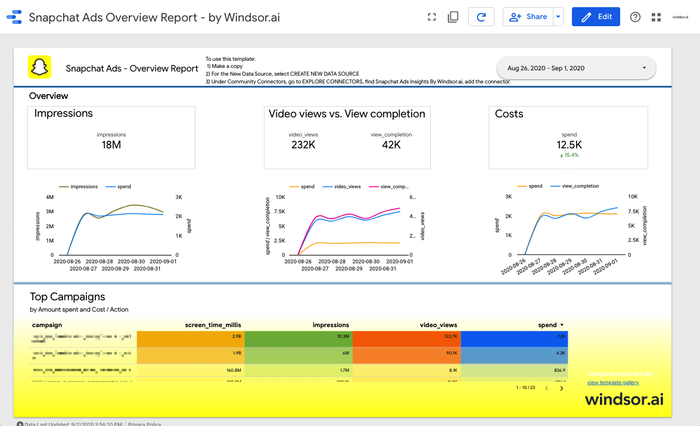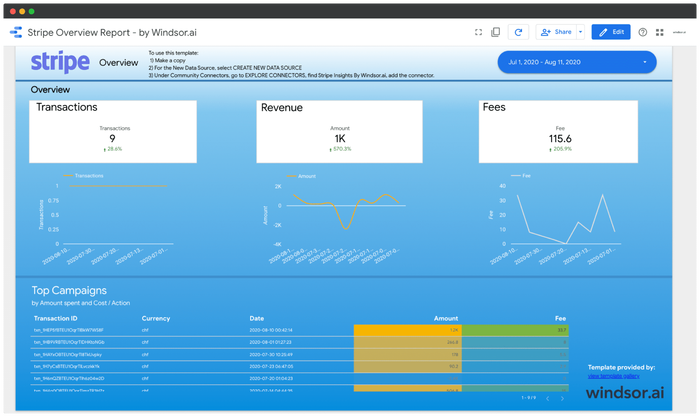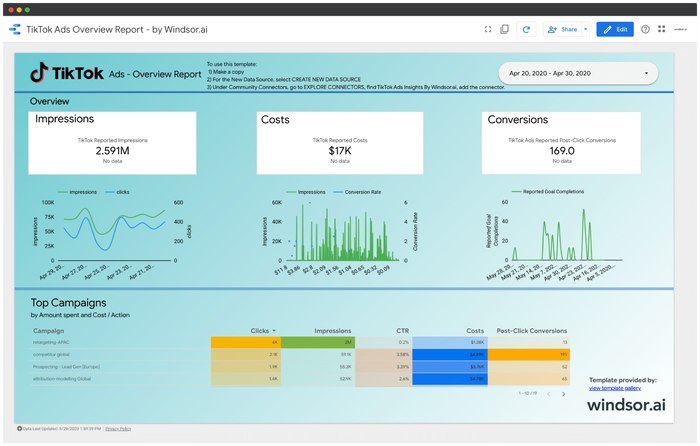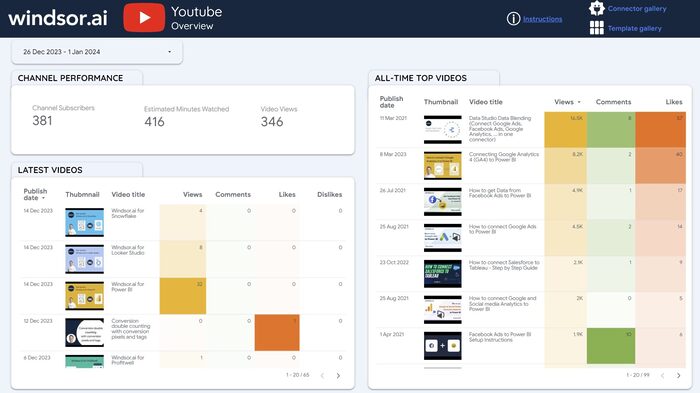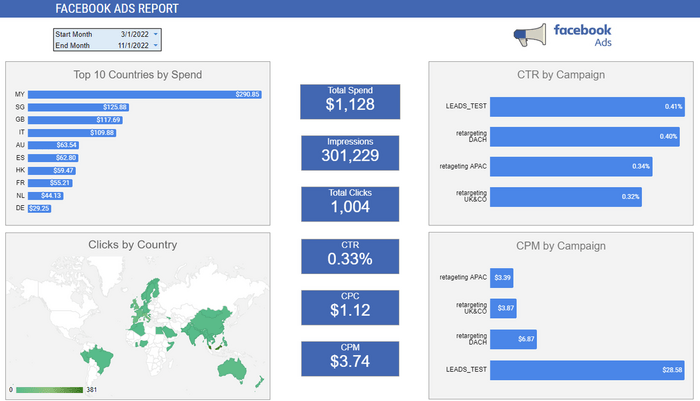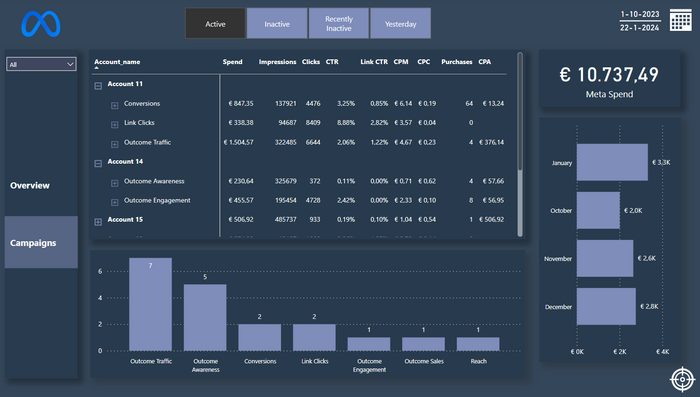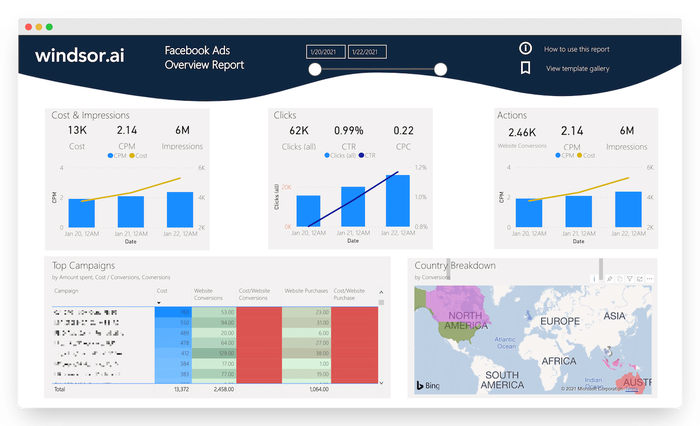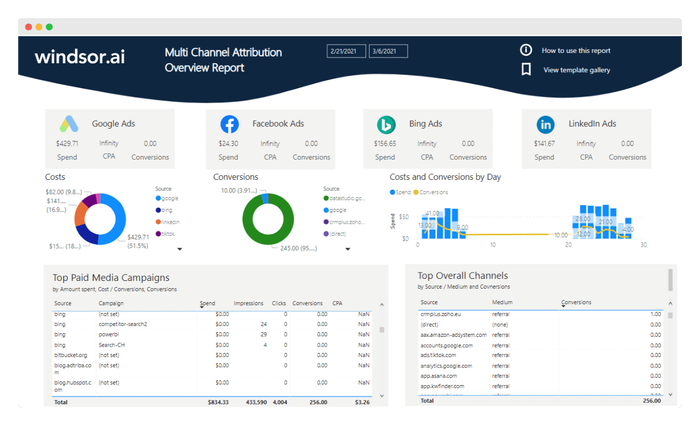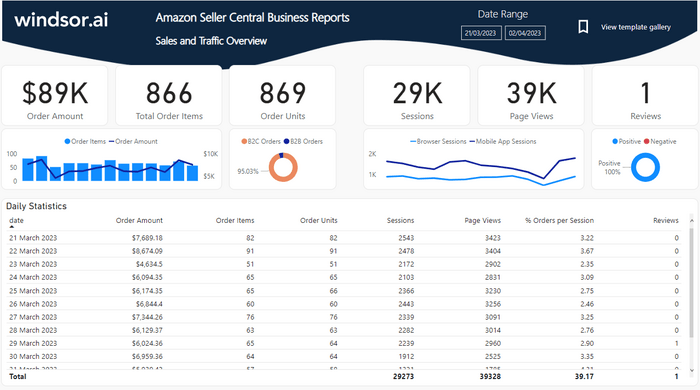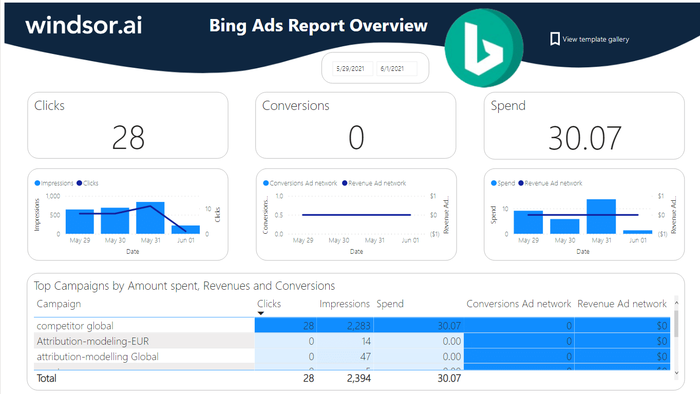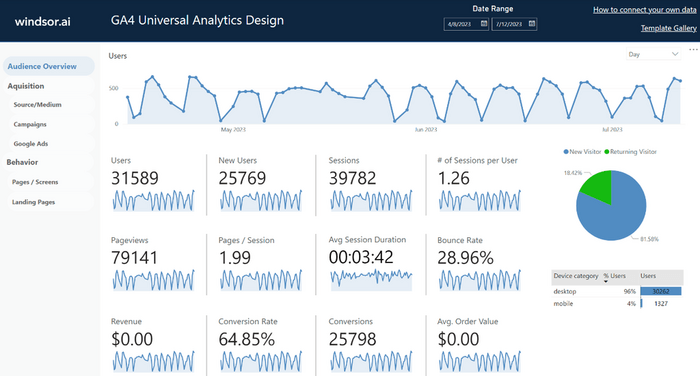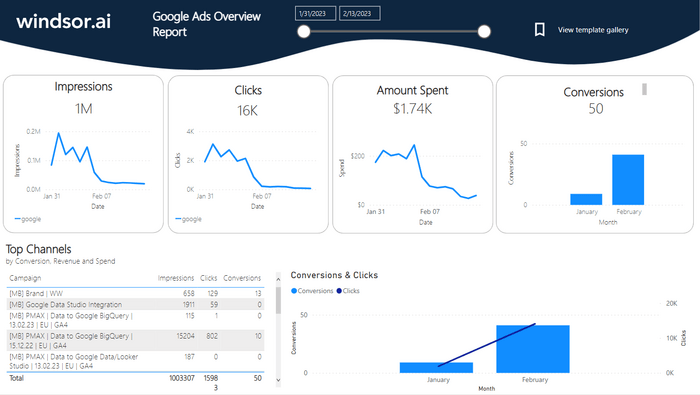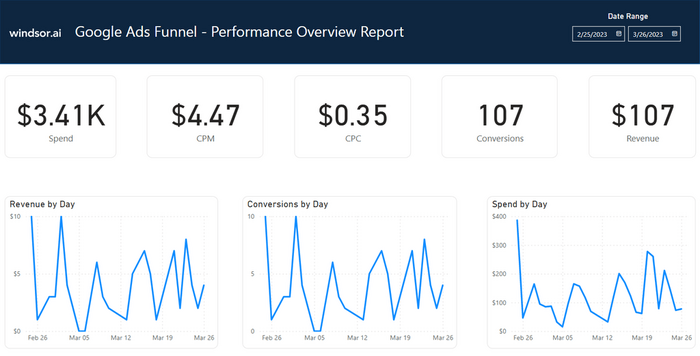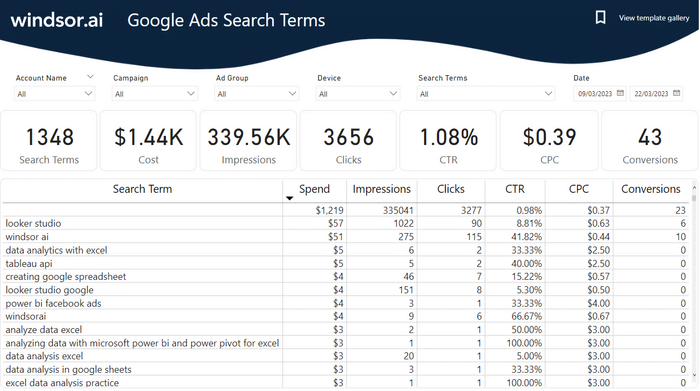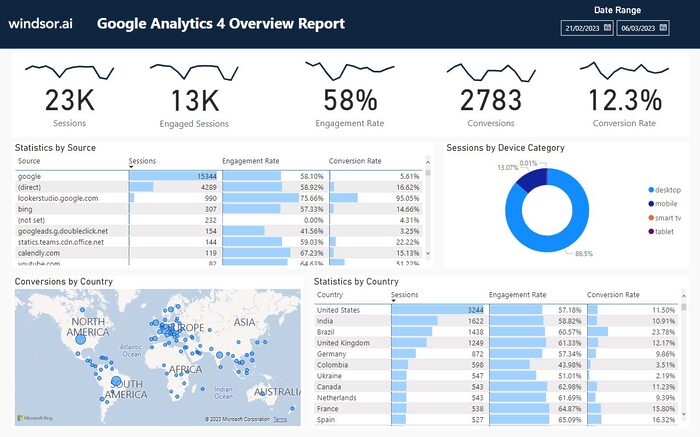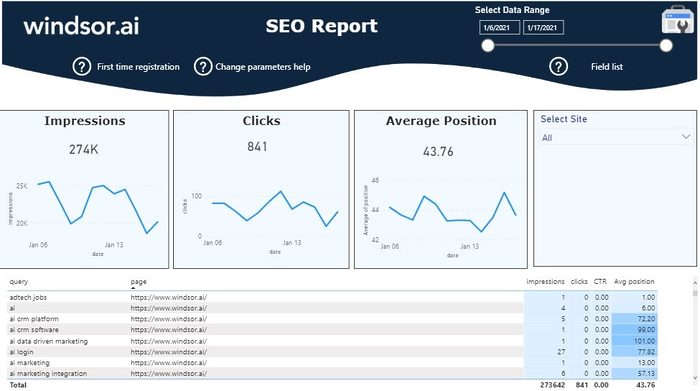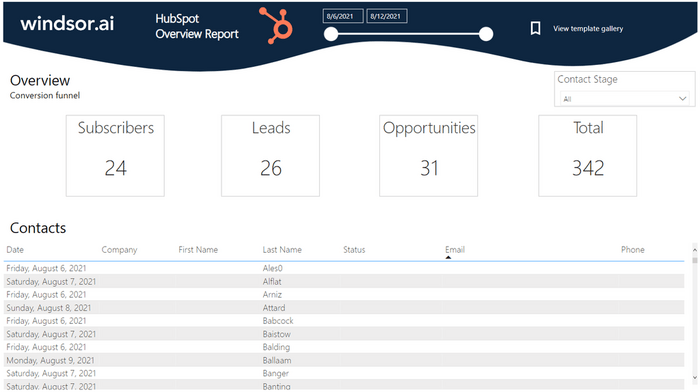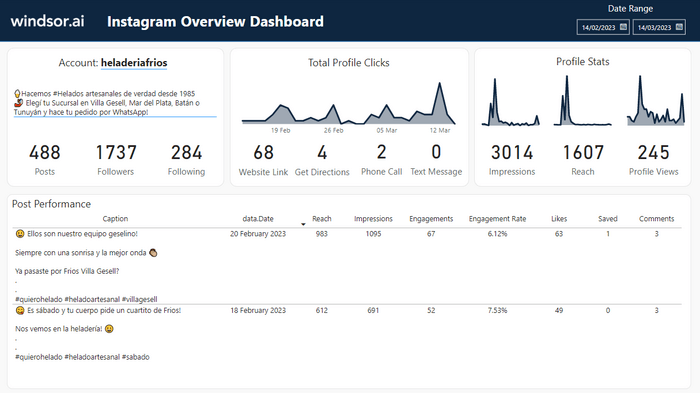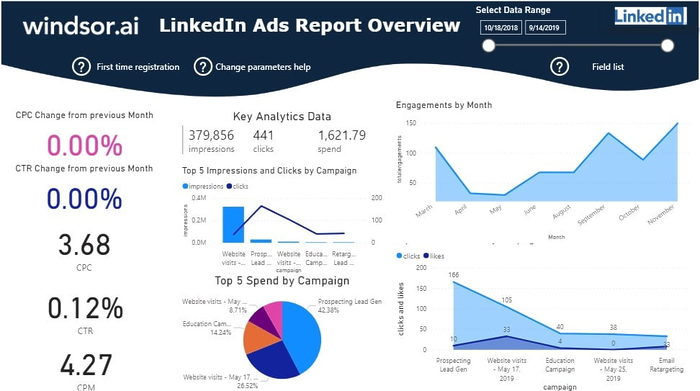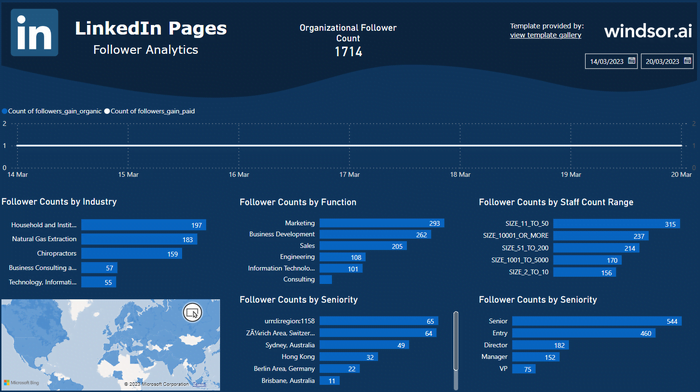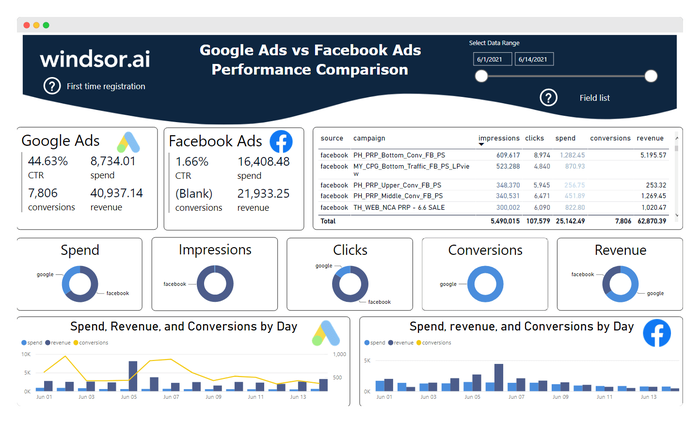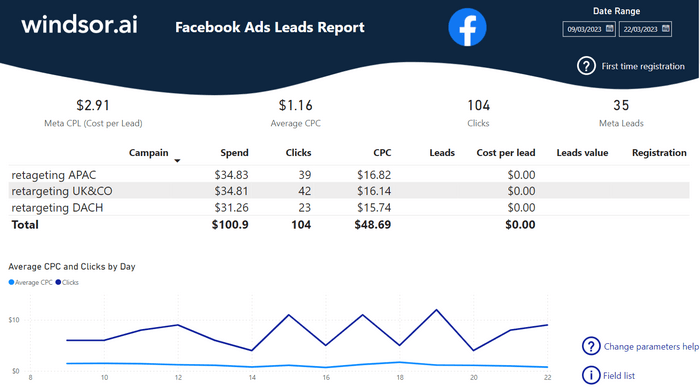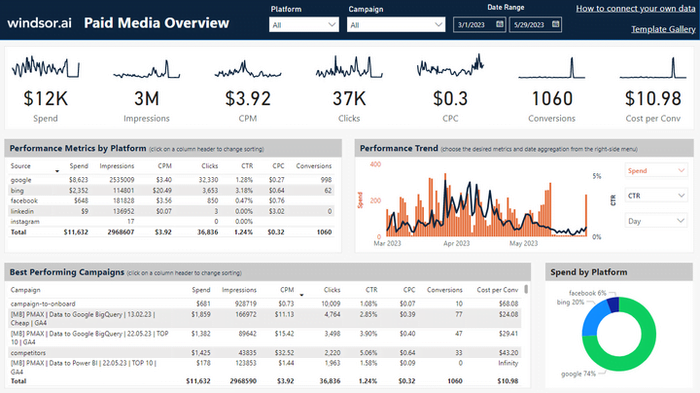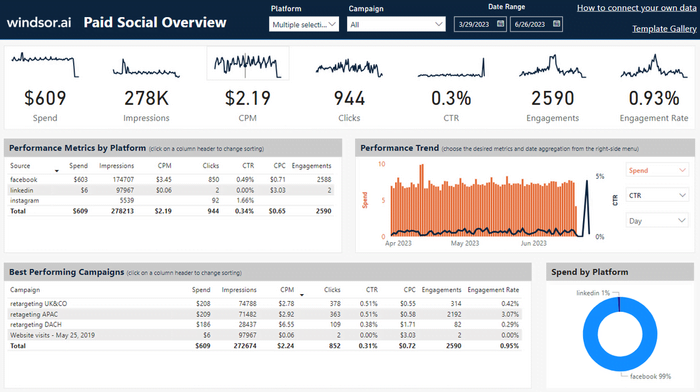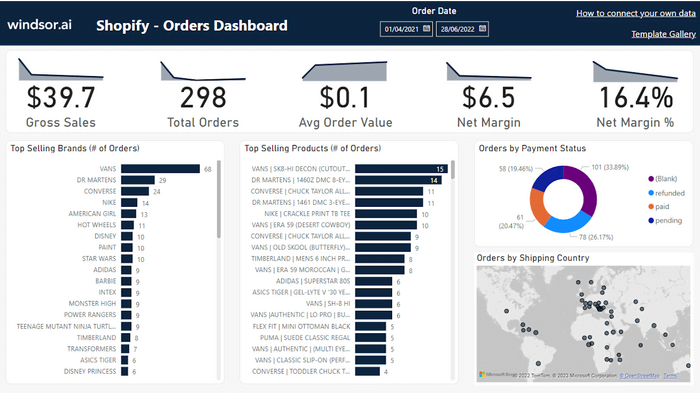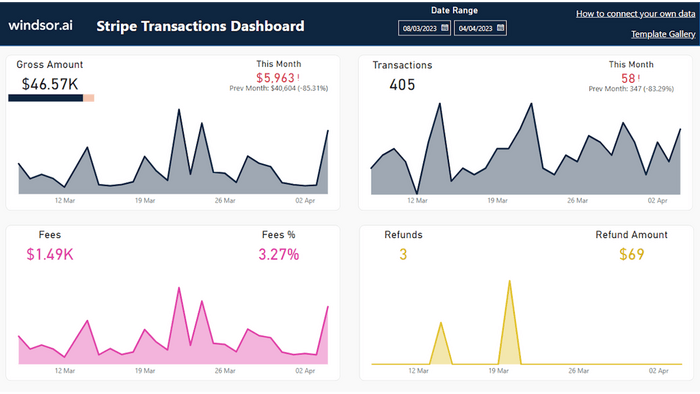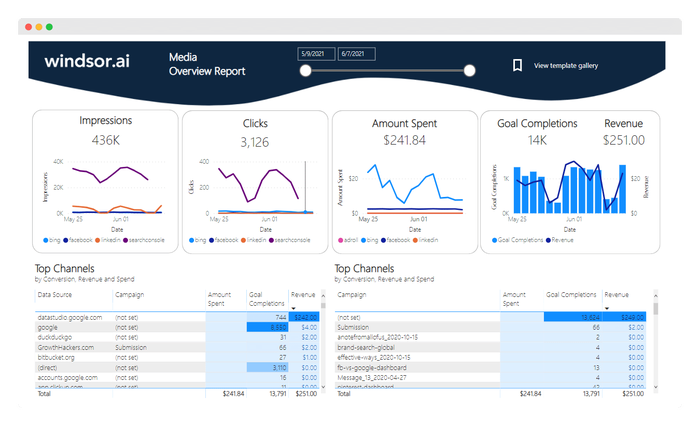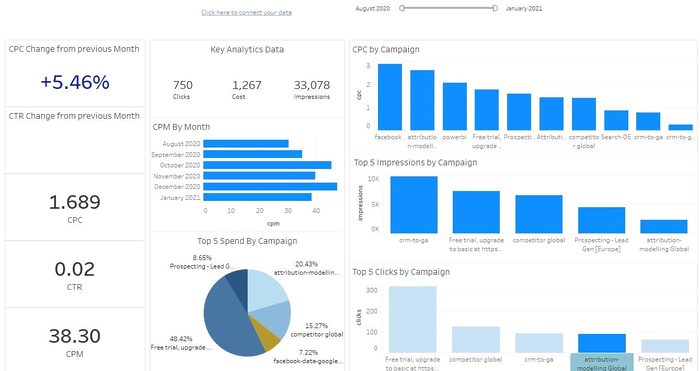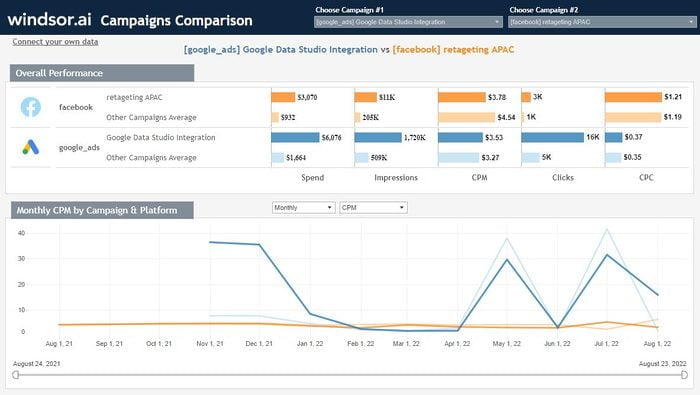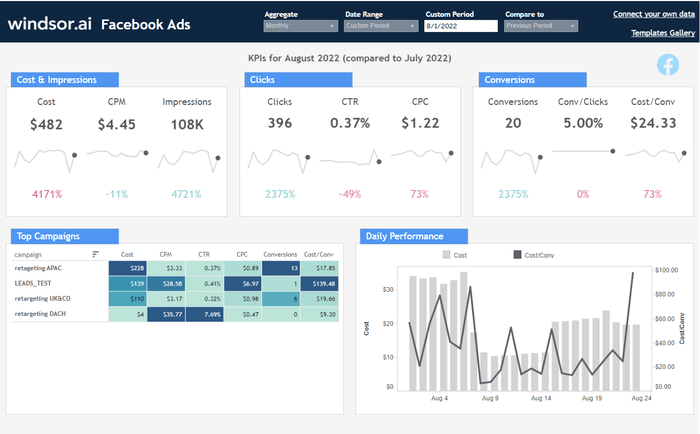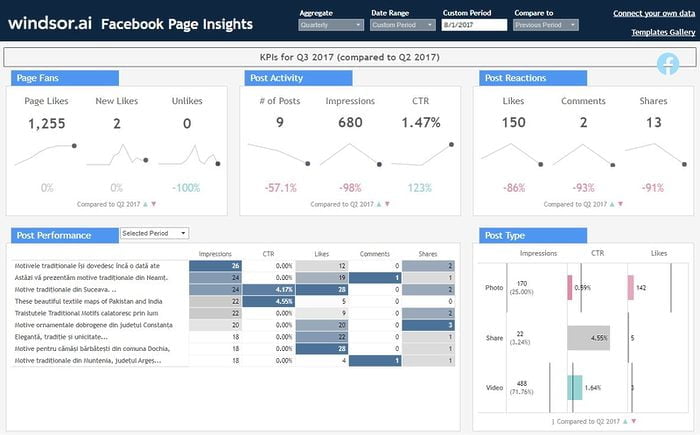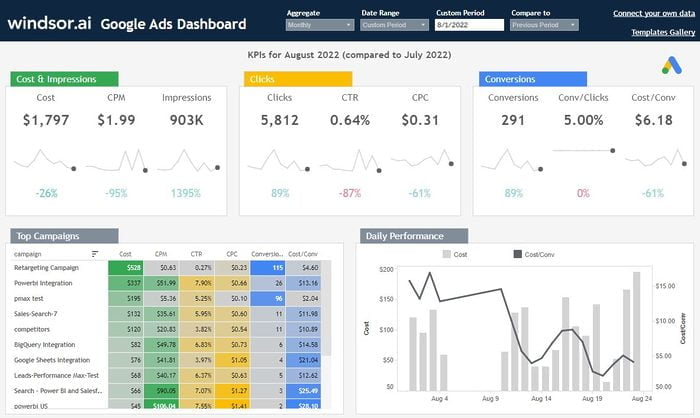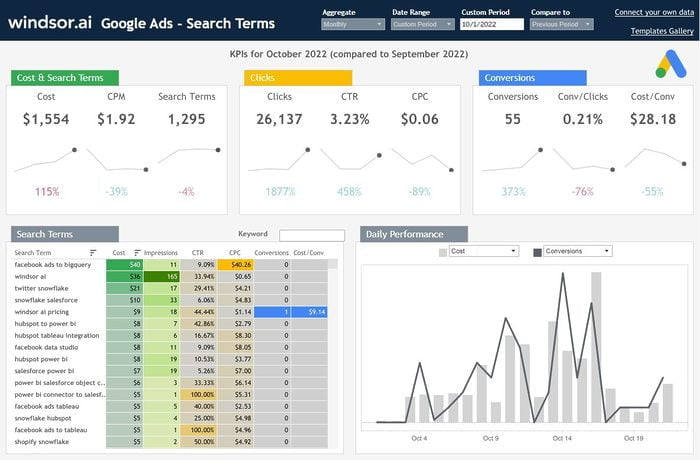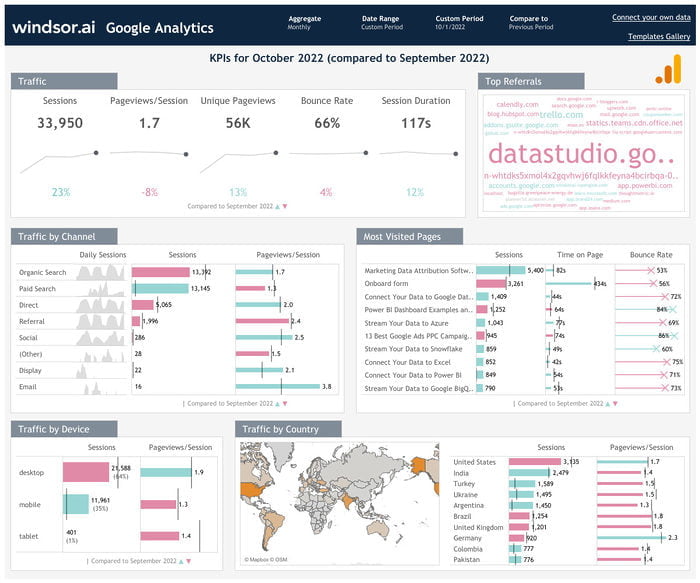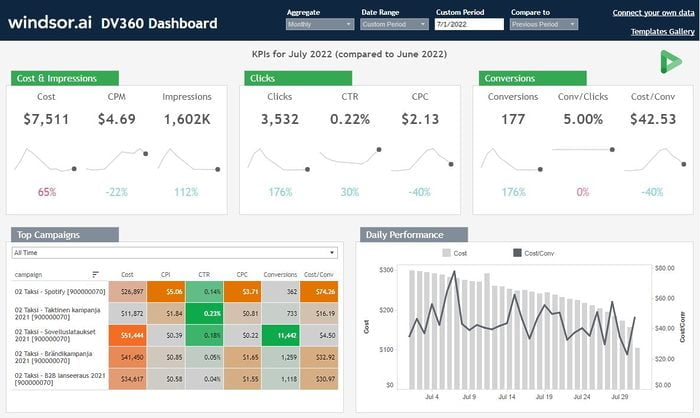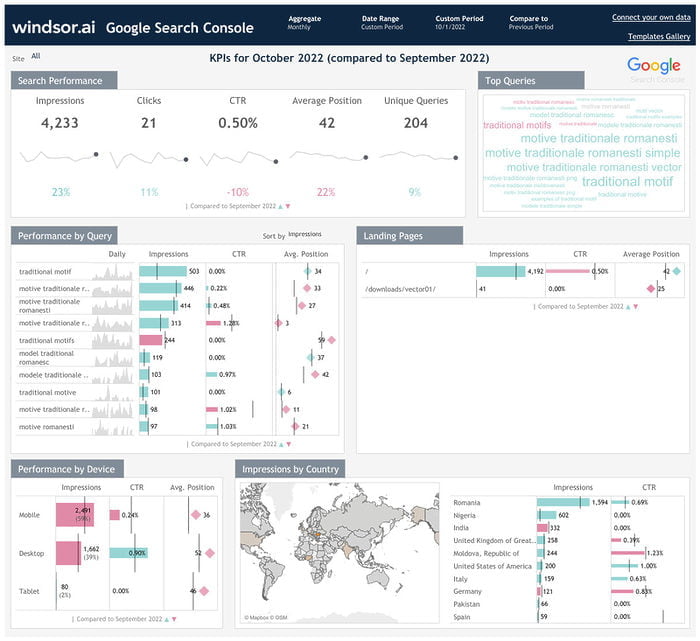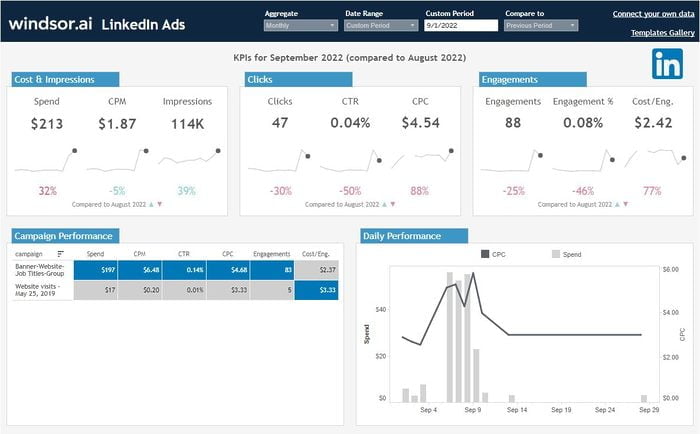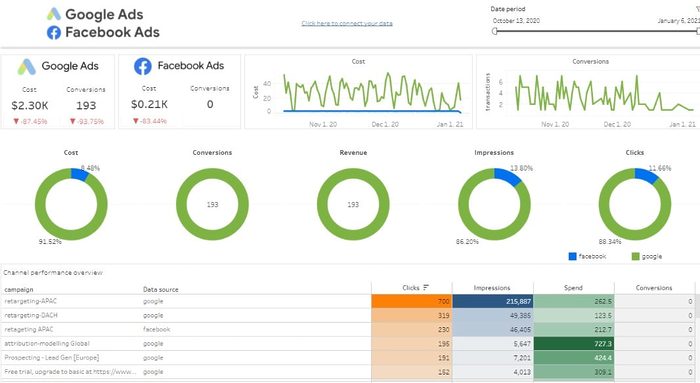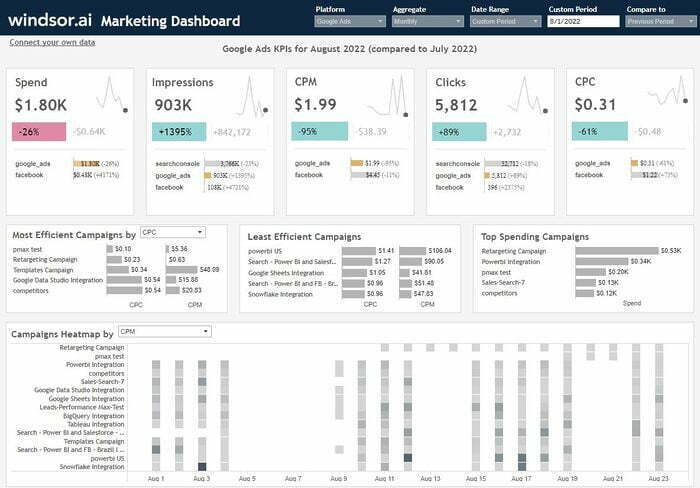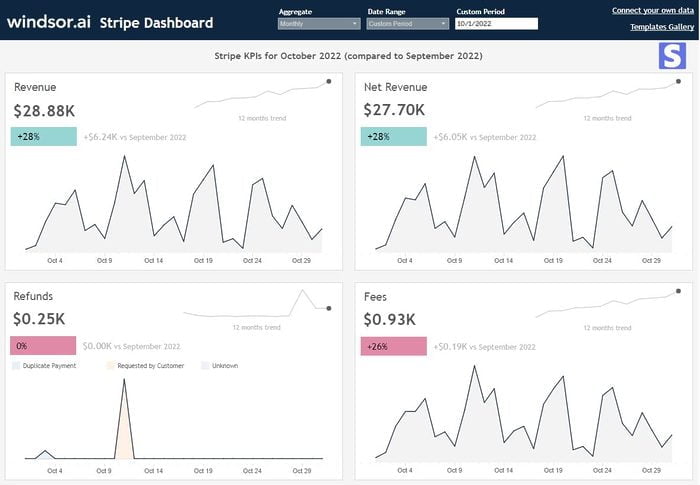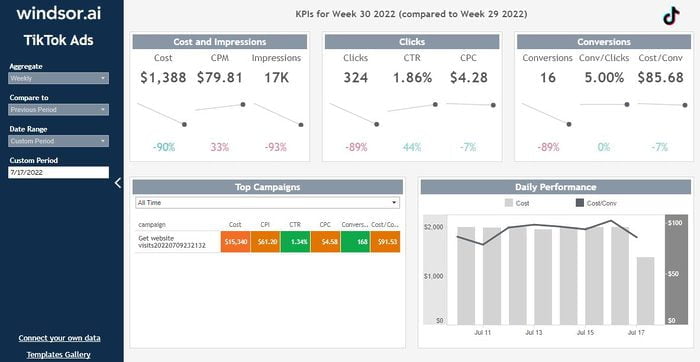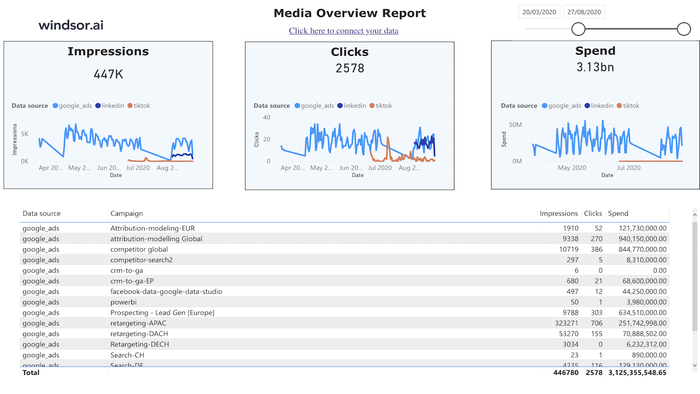Free Marketing Dashboard Templates
Create powerful marketing dashboards with Windsor.ai templates, created by experts.
Free Marketing Dashboard Templates with easy-to-follow instructions for connecting your own data.
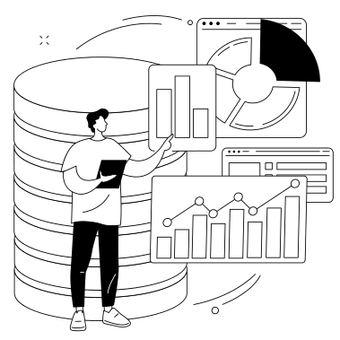
Try Windsor.ai today
Access all your data from your favorite sources in one place.
Get started for free with a 30 - day trial.
What is a Marketing Dashboard Template?
A marketing dashboard template is a pre-designed framework or layout that helps marketers track and visualize key performance indicators (KPIs) and metrics related to their marketing efforts. It provides a centralized view of important data, allowing marketers to monitor the effectiveness of their campaigns and make informed decisions.
A typical marketing dashboard template may include various elements such as:
- Key Metrics: This section usually displays the most critical KPIs, like website traffic, conversion rate, leads generated, customer acquisition cost (CAC), return on investment (ROI), etc.
- Traffic Sources: It shows where your website traffic is coming from, which could include channels like organic search, paid advertising, social media, referrals, etc.
- Conversion Funnel: This part of the dashboard typically outlines the stages of the customer journey, starting from initial awareness through to conversion, and may include metrics like click-through rate (CTR), conversion rate, and lead-to-customer conversion rate.
- Campaign Performance: It shows data specific to marketing campaigns, such as impressions, clicks, click-through rate, cost per click (CPC), etc.
- Customer Acquisition Cost (CAC): This metric shows how much it costs to acquire a new customer and is crucial for understanding the efficiency of your marketing efforts.
- Return on Investment (ROI): This section helps you track the return on investment for different marketing channels or campaigns, indicating which ones are most effective.
- Customer Lifetime Value (CLV): This metric represents the total revenue a business expects to earn from a customer throughout their entire relationship. It’s important for understanding the long-term value of your customers.
- Heat Maps or Geographic Data: Depending on your business, you might include geographic data to understand where your customers are located.
Templates can be created using various tools like Microsoft Excel, Google Sheets, Looker Studio, Power BI, Google Sheets or specialized dashboard software. They can be customized to fit the specific needs and goals of a particular marketing team or campaign. By using a marketing dashboard template, marketers can save time and effort in organizing and analyzing data, enabling them to make more informed decisions to optimize their marketing strategies.
Advantages of a Marketing Dashboard
- Tailor to Your Needs: A Marketing Dashboard allows for customization to suit your specific requirements.
- Monitor Advertising Performance: It enables you to closely track the effectiveness of your advertising initiatives.
- Centralizes Team Efforts: It keeps your team aligned and on the same page by providing a centralized view of key marketing metrics.
- Facilitates Informed Decision-Making: By consolidating both hard metrics (e.g., return on investment, net present value) and web-based metrics (e.g., bounce rate, total visits, click-through rate), a Marketing Dashboard empowers you to make more efficient and informed decisions.
- Time and Cost Efficiency: Pre-designed templates save time that would otherwise be spent creating a dashboard from scratch. This can lead to cost savings by reducing the hours spent on manual dashboard creation.
Top 27 Marketing Dashboard Templates
Below, you’ll find a selection of widely used Marketing Dashboard examples:
- Online (Digital) Marketing Dashboard
- Social Media Dashboard
- SEO Analytics Dashboard
- PPC Dashboard
- Google Analytics 4 Dashboard
- Content Marketing Dashboard
- Email Marketing Dashboard
- Web Analytics Dashboard
- Lead generation dashboard
- E-Commerce Marketing Dashboard
-
Omnichannel advertising dashboard
-
Affiliate marketing dashboard
-
Enterprise Marketing Dashboard
-
Agency Command Center
-
Marketing Attribution Dashboard
-
Account-Based Marketing Dashboard
-
A/B Test Dashboard
How to Create a Marketing Dashboard
- Determine who will be using the dashboard.
- Understand what specific information is crucial for the intended users.
- Gauge the audience’s familiarity with marketing metrics.
- Consider the level of experience the audience has in working with marketing data.
- Determine the marketing objectives the audience aims to achieve.
- Identify the necessary data sources (e.g., Google Analytics 4, Facebook Ads) for actionable insights.
- Decide on the critical metrics that should be visually represented.
Once these questions are addressed, you can focus and prioritize the top marketing metrics for tracking.
Designing an effective digital marketing dashboard involves tailoring it to your audience. For instance, if the primary users are your marketing team, you can delve into detailed data and key metrics. Alternatively, if executives are the main audience, it’s advisable to emphasize high-level metrics and key performance indicators. Choose appropriate visualizations and ensure the dashboard is user-friendly and easily comprehensible.
